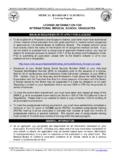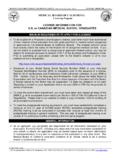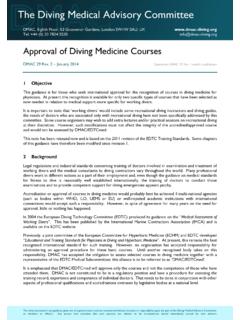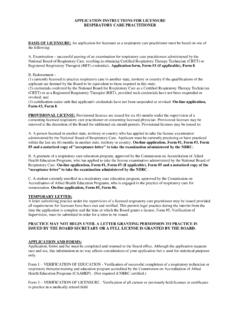Transcription of Basic Foot Assessment Checklist - DrsReference Site www ...
1 National foot Care Project National Association of Diabetes Centres Australasian Podiatry Council Basic foot Assessment Checklist 1. Ask the patient neuropathic symptoms Y N rest pain Y N intermittent claudication Y N previous foot ulcer Y N amputation Y N specify SITE_____ DATE ____/____/_____ 2. Look at both feet infection Y N ulceration Y N calluses or corns Y N skin breaks Y N nail disorders Y N LEFT RIGHT 3.
2 Check foot pulses Dorsalis pedis Y N Y N Posterior tibial Y N Y N LEFT RIGHT 4. Test for neuropathy Monofilament * Y N Y N 5. Assess footwear style Good Poor condition Good Poor fit Good Poor 6. Assess education need Does the patient understand the effects of diabetes on foot health ? Y N Can the patient identify appropriate foot care practices ? Y N Are the patient s feet adequately cared for ? Y N 7.
3 Assess self care capacity Does the patient have impaired vision ? Y N Can the patient reach own feet for safe self care ? Y N Are there other factors influencing ability to safely care for own feet ? Y N All people with diabetes need to have their feet assessed with these 7 simple steps every 6 months or more often if problems are identified Left Right *detected at sites marked National foot Care Project National Association of Diabetes Centres Australasian Podiatry Council Action Plan ffffollowing Basic foot Assessment DATE OF REFERRAL ____/_____/____ PATIENT NAME SERVICE PROVIDER_____ Is the foot high risk ?Is the foot high risk ?Is the foot high risk ?Is the foot high risk ? Yes Yes Yes Yes No No No No (re(re(re(re----check in 6 months)check in 6 months)check in 6 months)check in 6 months) If yes, why ?
4 History of previous foot ulceration or problems peripheral neuropathy peripheral vascular disease foot deformity other _____ Action* Record details of personnel referred to. Where resources are unavailable, indicate and describe alternative care provision Ulceration or significant infection referred to multidisciplinary team : High risk foot referred to podiatrist and/or multidisciplinary team : referred for medical Assessment at least every 6 months and foot examination every 3 months : Active foot problem referred to podiatrist Symptomatic peripheral vascular disease referred to vascular surgeon : involving endocrinologist / physician : Symptomatic peripheral neuropathy referred to endocrinologist : foot deformity or abnormality referred to podiatrist : Inadequate knowledge or foot care practices referred to.
5 Or education provided Yes *The patient s General Practitioner or Local Medical Officer will usually be responsible for coordinating the patient s care and should be informed of referrals, interventions and progress






